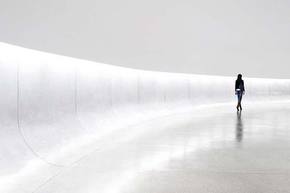Introduction to Minimalism
Minimalism was a movement that took place in the period of American literature that most call the Modernist period. More specifically, it is identified with the period of time after World War II concentrated around the 1960’s and 1970’s. Minimalist writers were known for trying to get their point across to the reader with the fewest words possible. Minimalism is often considered to be born out of the meta-fictional* trend that was ongoing at the time. Works that were considered to be meta-fictional were designed to draw attention to their status as an artifact. Minimalist writers did this by eliminating all nonessential words. Ernest Hemingway explains the reasoning behind minimalism as follows:
“If a writer of prose knows enough of what he is writing about, he may omit things that he knows and the reader, if the writer is writing truly enough, will have a feeling of those things as strongly as though the writer had started them. The dignity of movement of an iceberg is due to only one-eighth of it being above water. A writer who omits things because he does not know them only makes hollow places in his writing” – Ernest Hemingway (Death in the Afternoon)
Minimalism was a movement that took place in the period of American literature that most call the Modernist period. More specifically, it is identified with the period of time after World War II concentrated around the 1960’s and 1970’s. Minimalist writers were known for trying to get their point across to the reader with the fewest words possible. Minimalism is often considered to be born out of the meta-fictional* trend that was ongoing at the time. Works that were considered to be meta-fictional were designed to draw attention to their status as an artifact. Minimalist writers did this by eliminating all nonessential words. Ernest Hemingway explains the reasoning behind minimalism as follows:
“If a writer of prose knows enough of what he is writing about, he may omit things that he knows and the reader, if the writer is writing truly enough, will have a feeling of those things as strongly as though the writer had started them. The dignity of movement of an iceberg is due to only one-eighth of it being above water. A writer who omits things because he does not know them only makes hollow places in his writing” – Ernest Hemingway (Death in the Afternoon)
*to learn more about meta-fiction, view the link below
Not just any short writing can be denoted a minimalist piece. Over time, “rules” had to be created to determine what minimalism was and what it was not. Some of the following include:
As it can be seen, these rules are very general and tend to overlap. There is always a bit of discrepancy when determining how minimalist a work is.
Minimalist v. Non-minimalist:
Non-minimalist: "I yearned to go outside and breathe in the fresh air, so I opened the door, walked out, and enjoyed the wondrous amenities of the outdoors."
Minimalist: "I wanted to go outside, so I walked out the door."
As this example shows, writing that is minimalist is much more brief and to the point than writing that is not.
- The writer must leave “blank spaces” for the reader to come to their own conclusion with.
- A general absence of adjectives. This is to leave it up to the readers to interpret the work for themselves.
- There should be no narrator. Without one, the reader must use his or her imagination to obtain a sense of what is going on.
- Paraphrasing to show the reader human actions. Instead of using adjectives to describe what is going on during a scene, the writer directly describes the scene as is. This kept the work brief and direct.
As it can be seen, these rules are very general and tend to overlap. There is always a bit of discrepancy when determining how minimalist a work is.
Minimalist v. Non-minimalist:
Non-minimalist: "I yearned to go outside and breathe in the fresh air, so I opened the door, walked out, and enjoyed the wondrous amenities of the outdoors."
Minimalist: "I wanted to go outside, so I walked out the door."
As this example shows, writing that is minimalist is much more brief and to the point than writing that is not.
To learn more about the characteristics of minimalism, please visit the link below.

